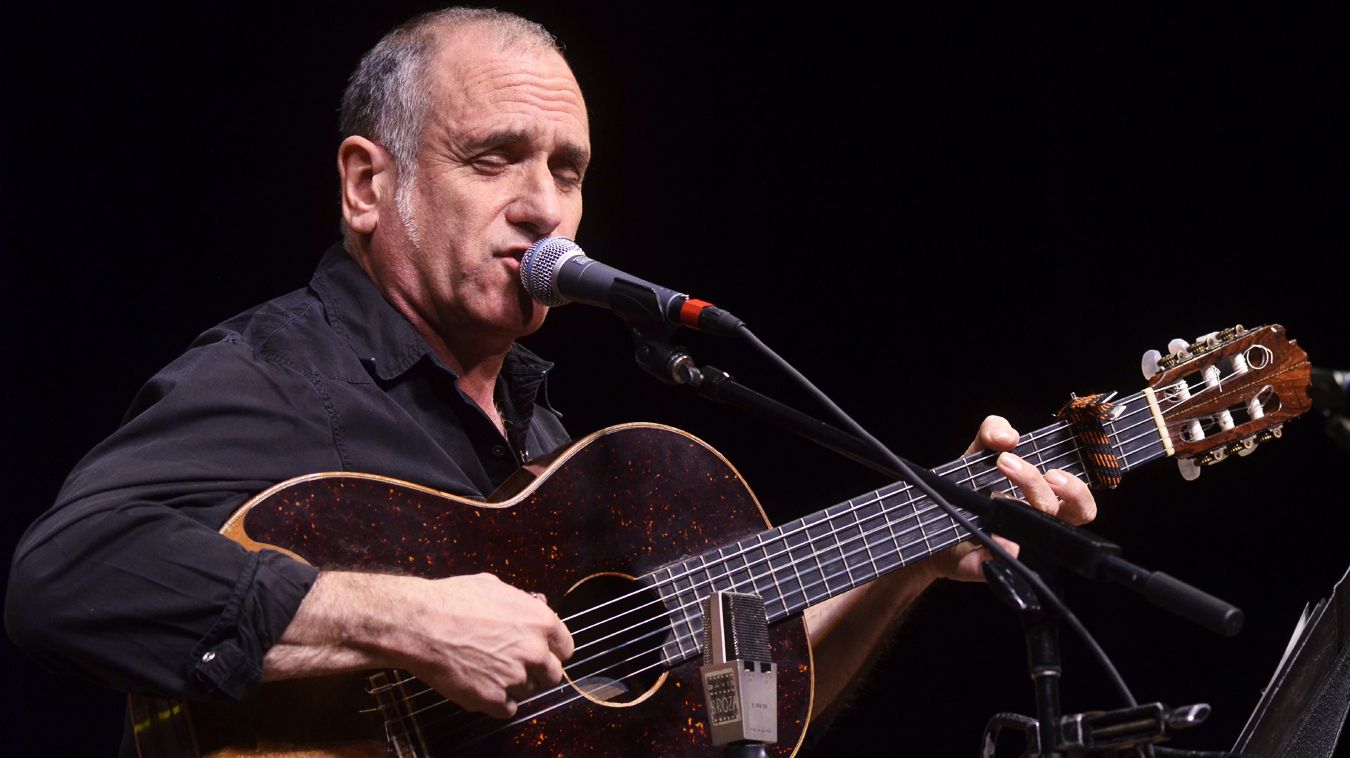Shabbat Gathering: David Broza goes liturgical.

Dear Chevra, as is our custom, we will gather tonight at 5.45p ct to welcome Shabbat. Rabbi Laurie will be joining us tonight. These are the coordinates:
Zoom
Meeting ID: 963 5113 1550
Password: 1989
Phone: +1 312 626 6799
(To unsubscribe from the newsletter, click the link at the bottom of this email.)
Here we go.
David Broza is probably the most popular Israeli musician in the world. With more than 40 albums behind him, many multi-platinum, he has earned accolades from around the world. He’s 66-years-0ld and now, for the very first time, he has turned his immense talents to liturgical music. His new album, Tefila, released a couple of months ago, is Broza’s interpretation of the music from the Friday night Kabbalat Shabbat service. I think it is a work of genius and, while all of it may not become part of our liturgy right away, it sure to find its way into the hearts of millions.
Who’s David Broza?
Broza was born in Haifa, Israel and grew up there, in Spain, and London. Nowadays, he splits his time between Tel Aviv and New York City. His music is rooted, as it were, in his vagabond background. Flamenco mixes with Rock mixes with Folk mixes with Jazz.
Why did he record Tefila?
Raised strictly secular, it never occurred to Broza to write liturgical music before and Tefila wasn’t his idea in the first place. Credit for that goes to the director of the Temple Emanu-El’s Streicker Center in Manhattan, Gady Levy. Temple Emanu-El is one of the architecturally largest synagogues in the world and a very prominent Reform synagogue in NYC. Levy approached Broza in 2020 to write liturgical music to attract young people to synagogue. Broza did not seriously consider Levy’s idea until later that year when he ran out of things to do during the pandemic lock down. In 14 days he wrote the 14 songs on the album.
Of course, the world was still in the midst of the lockdown during the pandemic when he was done composing, so it took some time to pull together the 22 piece orchestra and two choirs (one in NYC, the other in Tel Aviv) he needed to realize his vision. The result is a strikingly original album I highly recommend to you and is available on all the streaming services.
What’s it all about?
Here’s a quick look at a few of the tracks from Tefila.
Candle Lighting - It starts off as a quiet, jazzy little tune reinforced with a backup choir that sounds like a chorus of angels. It’s all layered on top of the horn section. It swings into a forte section and then resumes piano for the end of the song.
Shalom Aleihem - Begins with a Spanish-flavored guitar and sounds as if the song is going to be a flamenco, but it swings into a jazzy riff with a bass line climbing up and down. Strong percussion enters as do horns. A choir comes in to deliver the third verse and suffuses it with joy. Then the brass comes in again as do strings. There’s a good percussion beat and a great bass hook and the orchestra darts in and out before the song quickly ends.
Yedid Nefesh - It’s a swinging tune in 6/8 time. The orchestra takes over the percussion line with a staccato beat. A piano interlude breaks up the song and then returns to the jazz orchestra.
Lecha Dodi - Begins with a Roma guitar. It begins slowly and gradually picks up pace. It sounds like a Brecht / Weill composition. Add a klezmer clarinet and it is beautiful.
Barhu - Begins in Spanish style that seems to be the introduction but what we come to realize is actually a chant that’s the entire lyric. A trumpet is added to create a mood that seems to call out a matador for a bullfight. The bullring switches to a jazz club headlined by John Coltrane and Dizzy Gillespie. The piano takes the theme that gradually progresses into a full-on jazz improvisation. A baritone sax comes into the mix to lead what’s left of the melody into a full on loving caricature of Coltrane’s A Love Supreme. The vocals continue to rescue what’s left of the melody but are subsumed by the horns setting a new pace for the song. The trumpet goes full on be-bop with a tenor sax entwined with the trumpet and baritone sax. The vocals become as abstract as the horn section. It's my favorite track.
The remainder of the “songs” include…
- Ahavat Olam
- Shma
- Mi Chamocha
- Hashkiveinu
- Adonai S’Fatai
- Shalom Rav
- Yihiyu Leratzon
- Mi Shebeirach
- Yigdal
I greatly enjoyed Tefila and it has held up well after many, many listenings. And, while my mother always asks me what language is being sung, she never complains about the music, and I can’t say that when I turn up Grand Funk, Mott the Hoople, or The Grateful Dead.
And may it be for all of us a blessing.
See you tonight!
All my love,
brian.